Did you know that there are many different types of tanks that you can use to create a home for your koi fish? That said, you can’t just slap any tank together-an adult koi fish can weigh as much as 35 pounds, so they need plenty of space to roam.
As you read this article, keep in mind that there’s no “perfect” koi tank, as the material, movability, and size options depend on your situation.
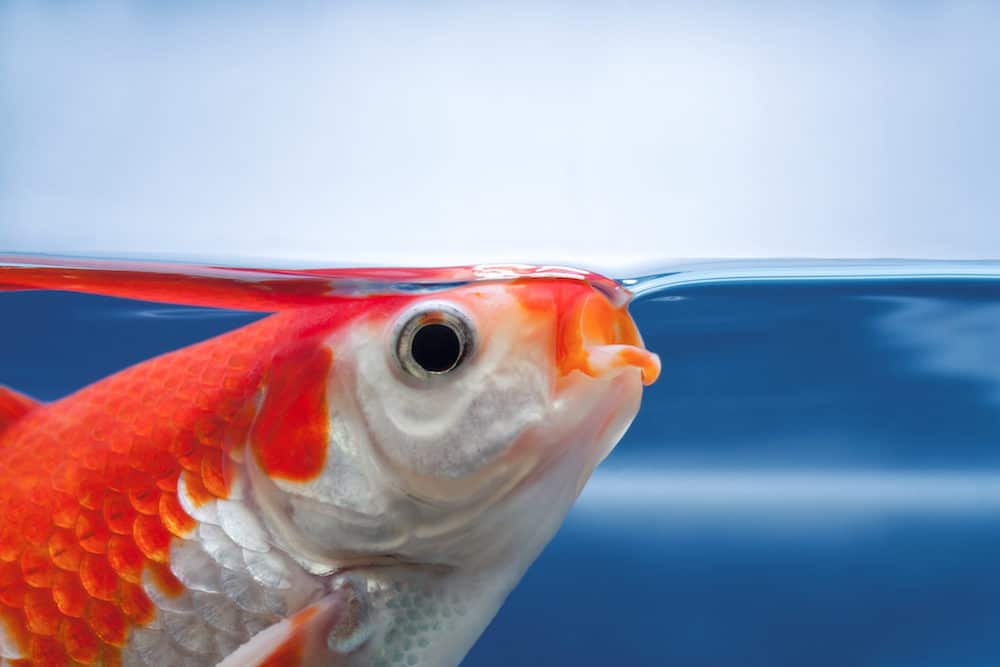
So, I’ll show you the range of koi pond tank options you can choose from, highlighting their pros and cons. I’ll also cover how to set up your tank so that your koi fish stay healthy, regardless of the tank method you use.
A koi pond isn’t something you want to whip together in DIY mode-all it takes is a small leak to drain the water and kill your fish. That said, it’s entirely possible to build your own koi tank if you’re careful. But that’s not what I’m here for today.
Instead, below are five types of koi pond tanks. I’m pretty sure that some of them may surprise you!
Preformed plastic ponds are one of the most popular modern-day ways to keep koi. They have several advantages, including:
The alternative to preformed plastic for koi fish ponds is a flexible pond liner, which is more likely to leak. However, both the preformed pond and flexible liner require digging a hole in your yard to create your koi pond tank.
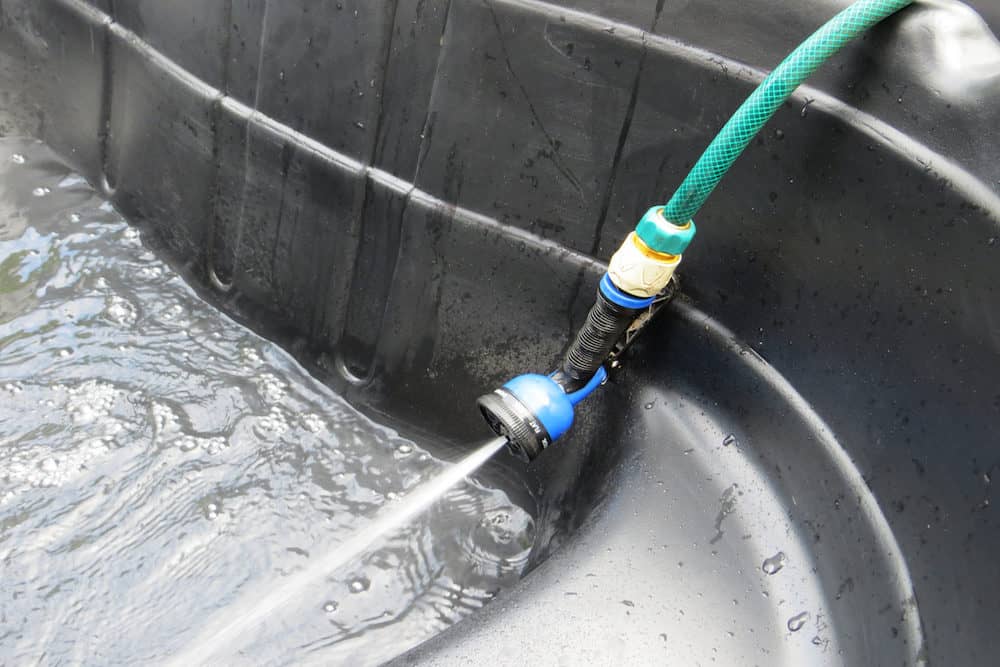
Preformed plastic ponds come in nearly any shape you can imagine. You can even purchase custom-made preformed ponds, creating intricate shapes that fit your yard. They’re also easy to transport since they fold down.
That said, preformed plastic pond tanks aren’t all sunshine and roses. They tend to be shallower than liner ponds, meaning that there’s a higher chance to disrupt your koi fish’s water quality. You also likely won’t have the room to create an elaborate water garden.
A galvanized stock tank as a koi pond is an excellent alternative to digging a hole in your yard. It has several advantages over plastic koi pond tanks, including:
Furthermore, the galvanized nature of this tank means that it has a zinc coating that prevents it from rusting for 50 years or more. Don’t be alarmed when you notice it turns from bright silver to a dull color, though-that’s a natural process as the metal interacts with chemicals in your koi fish’s water.
Nevertheless, fish owners gravitate towards using older galvanized stock tanks that have already gone through the aging process. So, consider filling a new galvanized tank with water in the fall and then adding plants and koi fish to it in the spring.
Plastic tanks are a DIY way to create koi fish ponds. Essentially, you can purchase any large plastic tub to use for your koi pond. One of the biggest attractions of this option is that you can move them around.
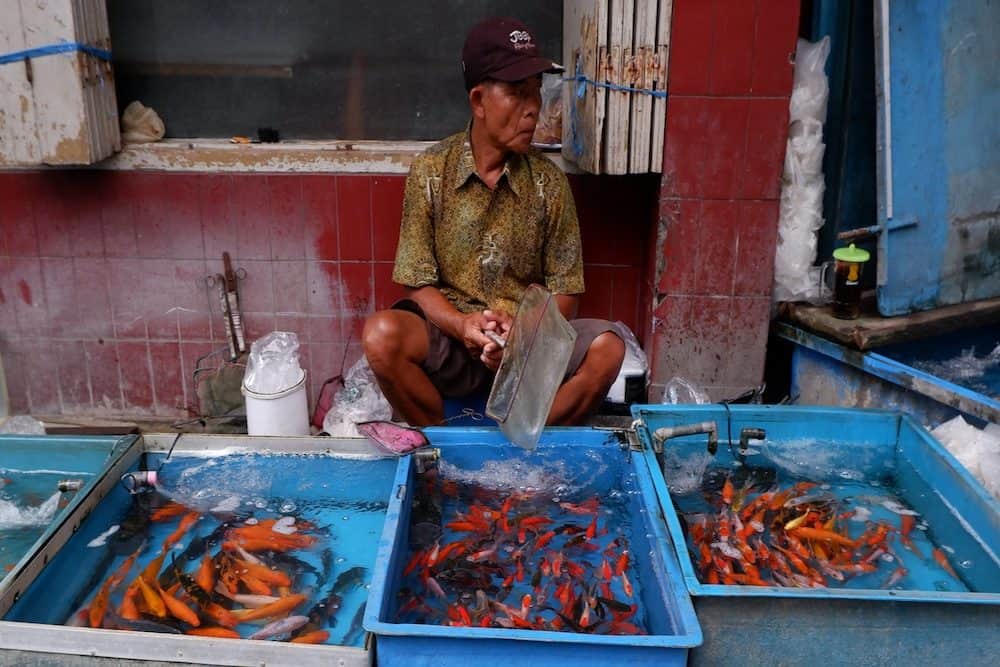
However, they’re not as resistant to the expansion and contraction of ice. So, if you live in an area where it drops below zero in the winter, you’ll either need to check your koi pond for leaks each year or consider an alternative option like galvanized tanks.
Since you’ll be using a plastic non-koi fish tub, you should let it weather a bit as you would with a galvanized tank to ensure you don’t expose your koi to harmful chemicals.
Furthermore, you’ll need to install all the necessities for a healthy koi tank, including a water filter and an aeration method.
If you absolutely must have an indoor koi pond, get ready to purchase the largest aquarium of your life-a 12-inch koi fish requires approximately 100 gallons of water.
For this reason, most people dig a koi pond in their backyard or keep them in a large outdoor tank.
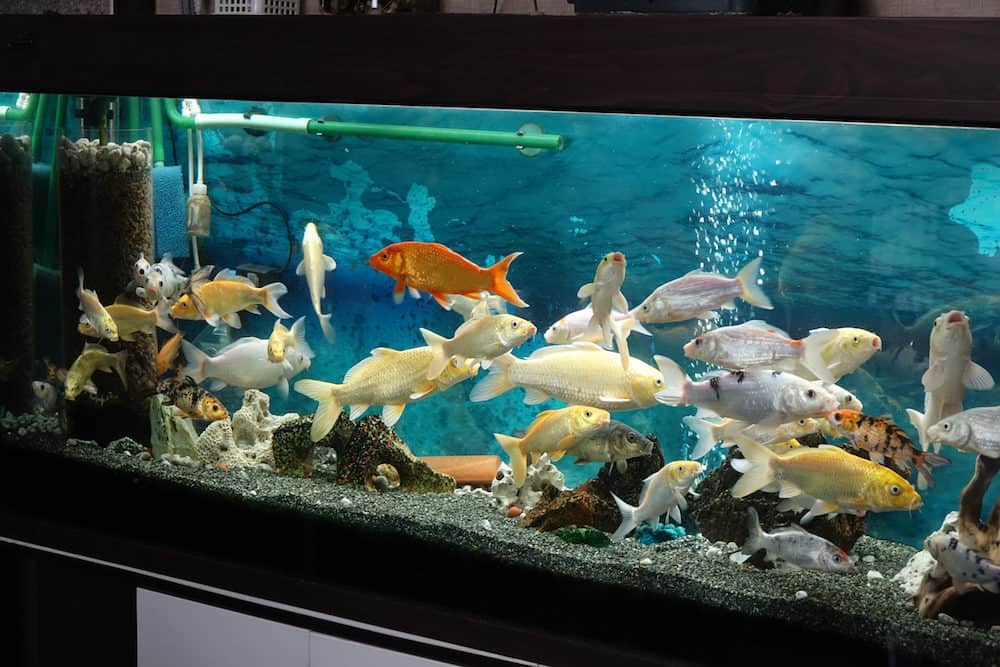
Nevertheless, you can keep your fish in a traditional koi aquarium tank as long as you offer them plenty of space and that you take into account room for non-adult fish to grow. More often than not, this means that you’ll likely only be able to support a few koi fish indoors.
As with outdoor tanks, you should use a pond kit to ensure the aquarium’s water has the proper pH, ammonia, nitrite, and phosphate levels. You’ll also need to keep the dissolved oxygen content high, which you can do by using an air stone.
Having a quarantine tank separate from your regular tank is crucial if you introduce new koi fish to your already established pond. That way, you can observe your fish for a few days or a week to ensure they’re not displaying health issues or parasite infections. You can also use it for introducing other species of fish, such as goldfish.
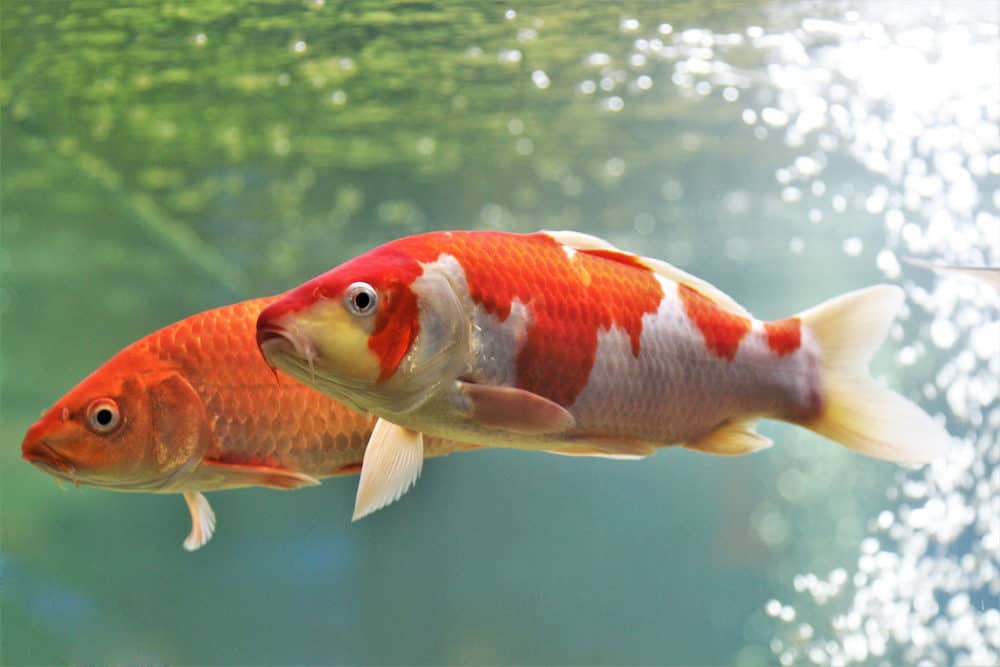
Quarantine tanks are also helpful if any of your current koi fish start to look sickly. That way, you avoid infecting the rest of your clan.
You can use any of the tanks we discussed here as your quarantine tank. However, keep in mind that even though this tank is a short-term solution, it still needs to have the proper measures to keep your koi fish happy and healthy.
That includes using a water testing kit, ensuring the temperature falls in the fish’s ideal 65 - 75-degree Fahrenheit range, and using a water pump.
Regardless of the tank method you choose, you’ve likely gathered a recurring theme that keeping the water conditions in your tank in balance is crucial for your koi fish’s wellbeing.
For starters, you should test your koi fish’s water with a testing kit every few days for the first week or so that you put your koi in their new tank. These testing kits assess the water for proper pH, ammonia, nitrite, and phosphate levels. After the initial period, you should test the tank water about once per month.
People have many recommendations for how many gallons of water your tank should have per koi fish, ranging from 50 - 250 gallons for a full-grown fish. I recommend having a minimum of 100 gallons of water per koi you own. However, a two-foot-long adult koi will be happiest if you give them 250 gallons of water each.
Finally, make sure to offer your koi and any pond fish that may share their water a depth of at least three feet. It may seem like your koi fish are always on the water’s surface, but that’s because they associate you with food when they see you. In reality, koi fish are more bottom-dwelling fish.
Another advantage of offering your koi fish a deeper tank is that it helps insulate them from the cold (assuming it’s an in-ground and not an above-ground tank). Deeper water can also help your koi better escape the eye of predators that lurk around your yard at night.



